It’s Day 2 of my visit to the Waipara Valley in North Canterbury, and an early morning call in to see Greystone. I’d written earlier this year about their innovative ‘Vineyard Ferment’ technique and resulting Pinot Noir wine. However, I can’t altogether to claim to quite understand it, and I’m keen to get a look at the vineyards to get a sense of this place. I know the wines are good – the Pinot having been served to the Chinese President Xi Jinping when he visited, and appearing on the ‘Fine Wines of New Zealand’ list that I am a huge fan of.
I’m met by Nik Mavromatis, GM of Sales and Marketing who has offered to guide me around the property, and then take us down to the winery for a chat and taste with winemaker Dom Maxwell. We start driving up and up, with the valley at our backs, and more vineyards appearing over the steepening hills.
Nik Mavromatis: Bruce Thomas already had a vineyard on the flat down on MacKenzies Road, growing mostly Riesling down there. He acquired a taste for expensive Burgundy and really wanted to see what they could do in terms of Pinot, from limestone spots. Bruce found this, which was a sheep farm, and took the soil measurements. They looked fantastic in terms of the limestone-clay mix, so they planted here. On the flat we’ve got the Sauvignon Blanc, Pinot Gris and Riesling mostly. And then as we get up the hill it’s Pinot Noir. 70% of the plantings are Pinot Noir although it only makes up about 40% of our production due to the yield being so low.
We’ve used two clones for our Sauvignon Blanc – it’s 376 and 530. They’re a totally different style of fruit. It’s more yellow rather than green, and more tropical fruit than that green bell pepper sort of way.
Up here is our top block – the ‘Thomas Brothers Pinot’ and our ‘Erin’s Chardonnay’. You can see the limestone – it’s literally coming out of the hillside. Half a metre of topsoil and then solid limestone. That’s what I think is the defining point of the great sites in North Canterbury when you’re looking at Black Estate, Pyramid Valley, Bell Hill. They’re all on those limestone slope sites. That’s what makes us different.
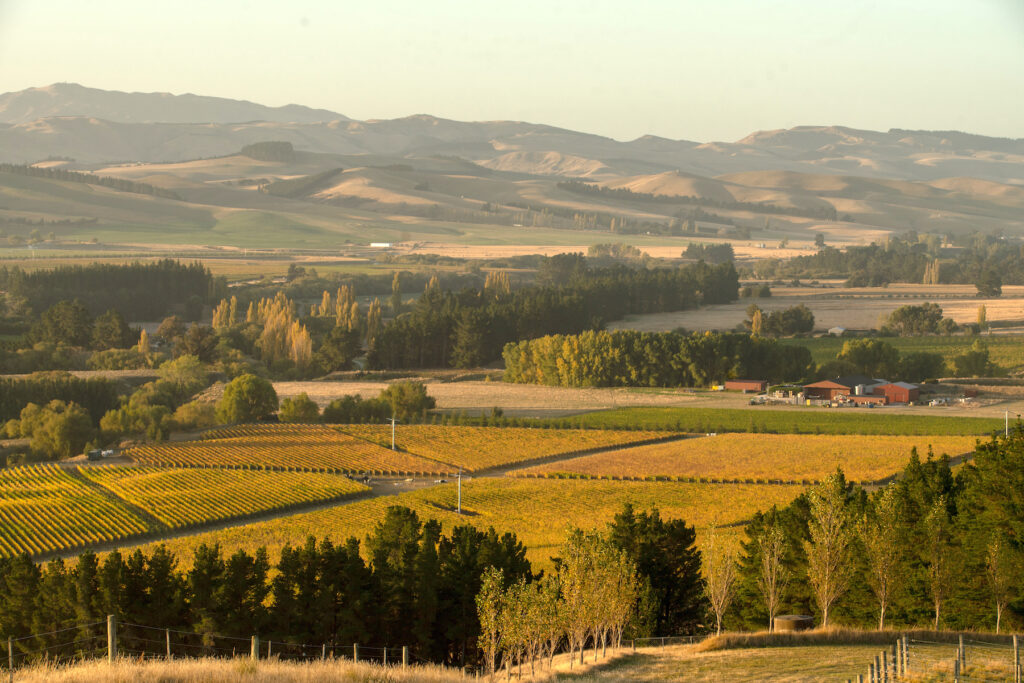
WineFolio: It’s beautiful country here.
NM: Yes, we should just add some bungy jumping I think, then we’d get a bit more reputation for wine.
I’m obviously biased – I think North Canterbury’s a pretty special site. You can see how dry it is. It’s got really low disease pressure, which helps if you’re organic. Really helps if you’re Pinot Noir. The only negative we’ve got really is the spring frosts and this year we got wasted with them. We’re over 50% down. But it is a cracking vintage so the quality is outstanding. Yields are very, very low. We hand picked everything this year.
We drive up to the top of the property, with breathtaking views over the whole valley. Across from Pegasus Bay over to Terrace Edge on the flat, and up to Waipara Hills.
You get clay out to the edges here on the Omihi parts; then as you get into the central part of the valley with Georges Road and Boneline, it is all gravels. Lovely bright aromatics for Riesling and Pinot Gris, but if you want the heavier, more complex Pinots you look for the limestone and clay. Up here was seashore, it’s literally been pushed up out of the hill as there’s a faultline that runs between Christchurch Port Hills and Kaikoura, and this is it, here.
Geologically speaking when you’re talking about Burgundy and the chalk around Chablis, you’re talking about 25 million plus years. We’re half a million here out of the ocean, so geologically, we’re a baby. Over there, straight ahead there’s a white scar on the landscape. That’s a limestone quarry, that’s where the Boneline is, and over the other side the 3 Deans; and over past there you’ve got Pyramid Valley and Bell Hill. It’s a really fine white chalk, and I think the Chardonnays off that fine white chalk are just the best in New Zealand, hands down.
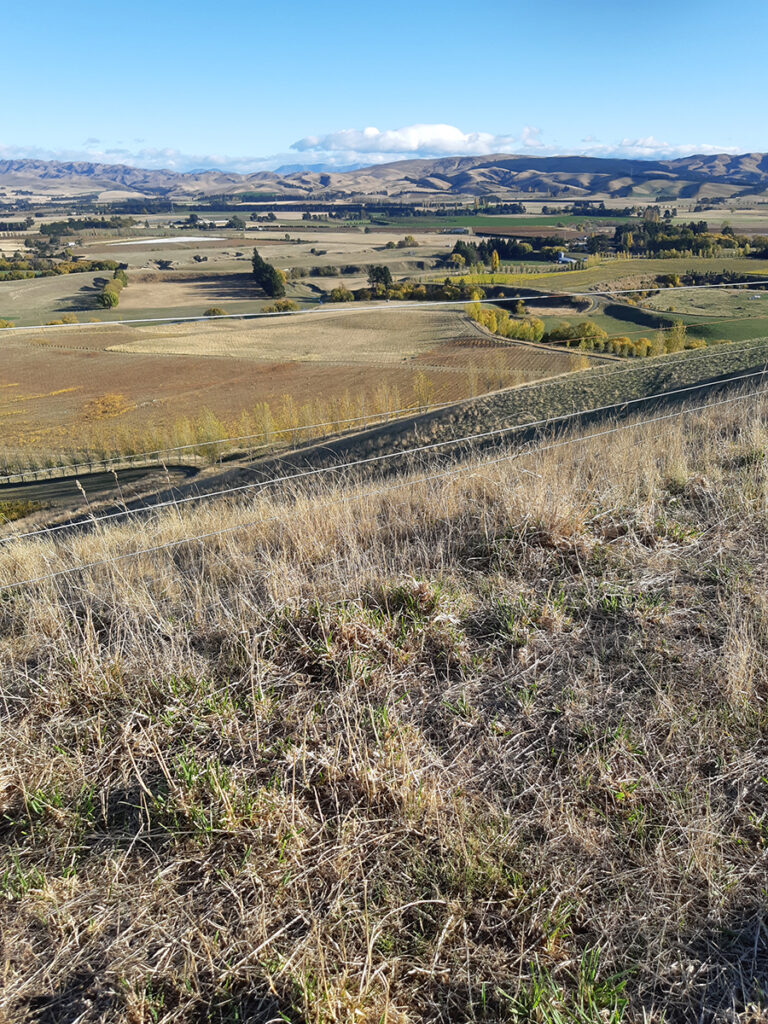
You’ve got the more crunchy, grey aglomerate limestone, hence the name – Greystone, up here. That’s got a bit more of the oyster shell like this. And the whole name Waipara – Wai – water, Para – muddy; because when the limestone breaks down it forms clays. When it rains here the rivers flow dark. Quite unique in terms of that limestone character here. Waitaki is fairly similar but I think they get frosted even worse than us. It’s hard enough here.
And we’re trying to convince people of the quality of the wines. That there’s life beyond just Central Otago when it comes to Pinot particularly. We’re certainly getting there. Internationally people know North Canterbury, but it’s harder for Australian and Domestic.
It’s tough to get the dollars required for the yields that you get. It’s not an easy thing to do, to grow, to get your yields year on year. We want to see high end wines thrive and survive in New Zealand.
WF: That ties into something I have a tendency to talk about – which is the concept of Champagne, and drinking that in New Zealand. So, people will spend $50 to $60 on a bottle of French Champagne, but baulk at spending that on a decent bottle of still wine. And do you ever taste Champagne? If I spent $60 on a bottle of wine, I’d for sure want to spend a minute and think about how that tastes. But Champagne – you take it to a party, and you stand up, talking, drinking Champagne and thinking “I’m having a lovely time, drinking Champagne, life’s good” But what did it taste like. Do you know? So it could have been anything really.
NM: I’m a professional, and if someone gave me a glass, blind, of Bollinger and one of Lanson – I would struggle to know which one was which. Somewhere like Nautilus – their sparkling is amazing, and I love Huia sparkling. Marlborough sparkling is off the chart, and that’s what they should be doing! We did some market data with Charlotte Read the other day, and wine sales are just falling off the chart. They’re disappearing. As the boomers go, the sales are just disappearing. And the younger people are drinking craft beer, craft gin, and the big growth was sparkling! We did a Pet Nat last year, all organic with no additions whatsoever, and we sold out in record time. It was still made by the team here, concentrating on nice, clean wines – but that doesn’t mean you have to add a tonne of chemicals.
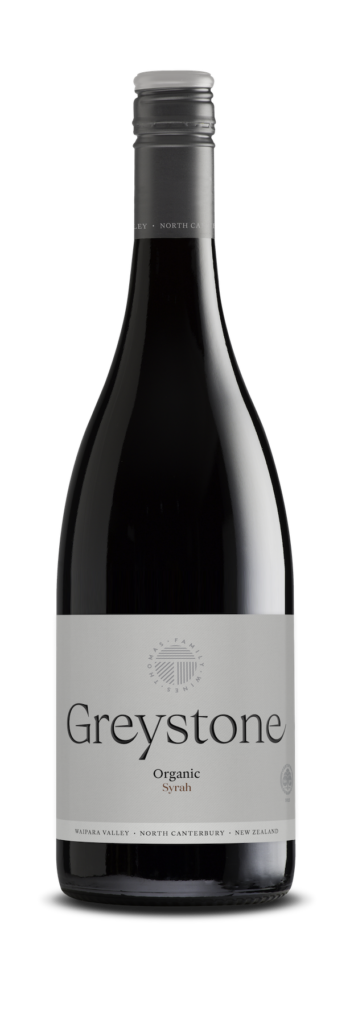
Wine sales are dropping, and the younger generation isn’t getting it. And I’m going “hang on, we’re doing the story-telling wrong” We’re still trying to do something that’s effectively forty years ago – like putting medals on, and in the 1980s that’s how you could tell. We’re a different industry now. There’s a lot more knowledge.
Drinkability is important, rather than it shows well in a small amount. We’ve gone too far down that route with Parker-isation, and hopefully we’re getting back to people telling the stories.Why do we grow up here where it’s so dry and really hard? Why not just go down to the flat and put a herd of cows on the land with a tonne of irrigation. Why people are allowed to do dairy finishing in North Canterbury is beyond me… We are really dry, but very lucky up here too.
Steve who has the sheep around us, is really good at working with organics, so he doesn’t drench his sheep, so we can put them on site and they do all our weeding. And up behind us is actually the largest organic sheep farm in New Zealand – it runs all the way down to the ocean on the far side. They do the Wash Creek branded organic lamb, which is really good stuff. It’s an amazing site and we just need to do a bit more of that North Canterbury story telling.
WF: You’ve won a few awards though?
NM: Yes, we won Decanter Magazine ‘Best Pinot Noir in the World’, ‘Organic Vineyard of the Year’ a couple of times – Dom was ‘Gourmet Traveller Winemaker of the Year’ the first time they did that.
WF: And that Vineyard Ferment Pinot story got a few column inches after it got named in that list of cool wine things?
NM: Yes, we’ll show you that in a second. It’s my favourite here. It’s a wee bit challenging for some people in that it doesn’t have new oak. For a New Zealand Pinot they’re not quite used to that. But we’re trying to tell a story with indigenous yeast, of our place, so let’s not mask it with new oak.
We drive back down the hillside towards the winery, across what is a beautiful bit of land – quite a special site.
NM: This is our Pinot, so a selection of about seven different clones – you get an idea of the steepness!
WF: How much wine do you make?
NM: In a good year about 20,000 cases. This year we’ll be lucky to get 9000.
WF: Someone won’t be happy about that.
NM: No, we’ve just been having a few meetings, about how we do that. The whole supply and demand thing doesn’t quite work when you can’t just double your price. Over here is where we get our later-pick Riesling and there’s a bit of Gruner Veltliner and St Laurent we’re trialling. We haven’t been very happy with that but we use it in our skin ferment.
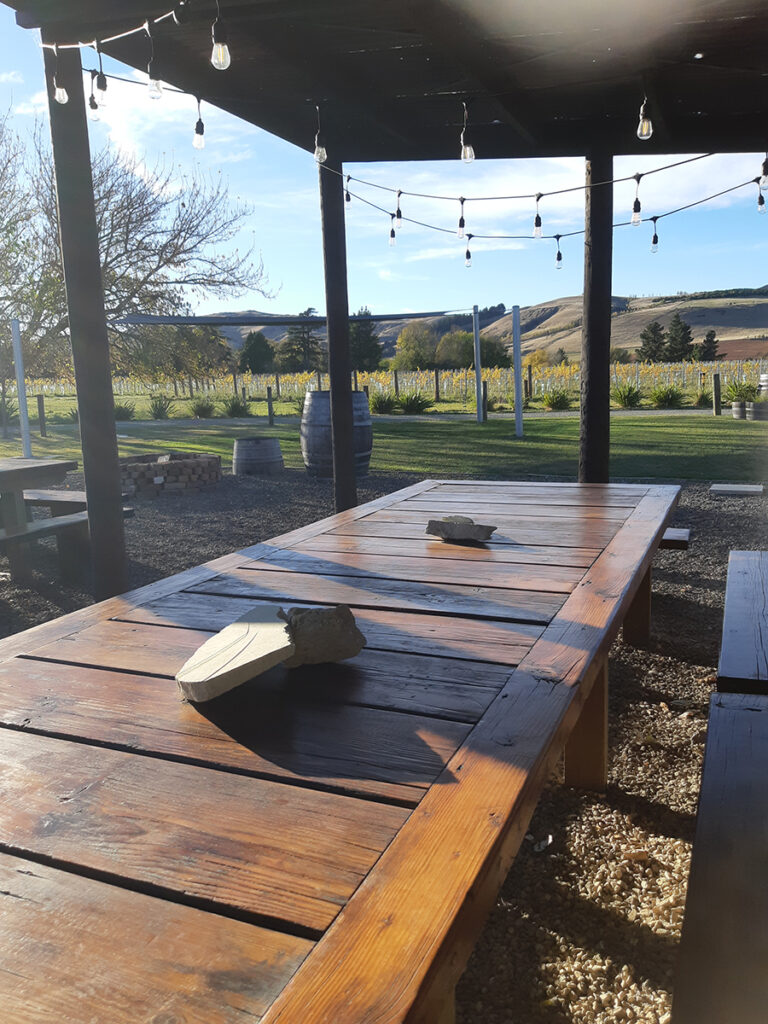
WF: It probably suits that kind of thing – the Gruner. I was at Lime Rock and they opened a bottle, which I really liked, and then the only other one I’ve loved was Blank Canvas. Otherwise I’m generally not keen, so far!
NM: I do not like Gruner. The worst New Zealand wine I’ve ever drunk was a Gruner from Marlborough, and it was on an Air New Zealand flight. It was like ‘you’ve got to be kidding me’. It tasted like someone had mixed some white wine, vodka and white pepper together.
WF: I’ve had some shockers. I had one at a decent restaurant and the Sommelier recommended it…and I spat it out into another glass.
NM: Yet I love New Zealand Albarino!
We head over, past the Cellar Door where an ‘end of harvest hangi’ is being put in the ground, and on to the Winery down the road.
WF: I noticed Brancott have got a vineyard down here.
NM: That was the old Corbans block. If you ever see a bottle of Corbans Amberley Rhine Riesling come up for auction – buy it. It’s a fantastic Riesling. I think they ripped it out in 2000 and replaced it with Sav Blanc. It was beautiful un-grafted Riesling.
WF: I love Riesling from here, it’s excellent.
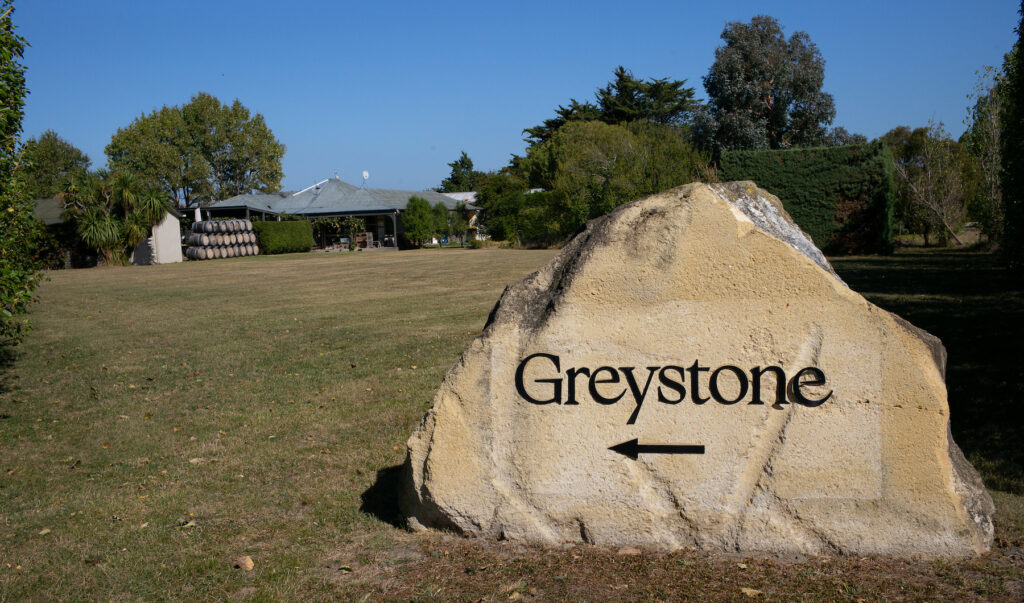
We drive back off the highway and past lots of vines
NM: This is Dancing Water – that’s the building but they’re not making it there. They’re beautiful old vines that Mark Rattray planted in ’86. There’s some really old Chardonnay on the other side that’s absolutely stunning.
WF: We need more Chardonnay.
NM: Yes, we need more, we always sell out. The vineyard got let go for some time but it’s nice to see that they’re doing it up now.
And this is Muddy Water. The oldest organic vineyard in North Canterbury. Set up by the Easts in 1990, planted in 1993 and they retired in 2010. There’s Riesling, Chardonnay and about halfway down it goes Pinot. All ungrafted, wider rows and heavier clay. We’ve done a tonne of planting – more Pinot.
At the winery, winemaker Dom Maxwell appears..
Dom Maxwell: Good to see you. I was just saying I was up at Pyramid Valley yesterday. I said I’m going to bring Peter over here. And say we need this, and this, and this, and that. They’ve got a wooden egg and these beautiful concrete fermenters and storage tanks that are like that thick, and inside the concrete they’ve got the same system as underfloor heating and cooling. So you can heat and cool with a slow release and just dial up whatever temperature you want. And the same with the wooden cuves. As opposed to us who have to put it a pallet jack and wheel it outside into the sunshine. The interesting that Huw was saying is that “it’s awesome having all this stuff, but I’ve got to work out how to use it”. And I don’t think he meant literally how to use it, but how to have it not take away that personality that you’ve got with Pyramid Valley wines. There’s an element of control that you leave up to nature.
NM: The temptation with things like that I guess is to have complete control. It’s Bob Dylan in the 80s with a synthesiser – and ‘oh let’s use this’. Er, let’s not.
DM: The plantings are amazing. They really are trying to best follow in those footsteps, as well as grow it. We’re fairly quiet here this vintage. We had about half the amount of fruit in the winery compared to last year. We’re getting towards the end of red pressing – it was quite an early harvest as well as small. The wines will be really good.
Dom grabs a winethief and suggests a few barrel samples..
WF: I’m keen to try the Vineyard Ferment as it’s one I’ve not had before
NM: Have you pressed that off yet?
DM: Yes, we have and we’ve also got 2020 still in barrel, which is quite good. Then we can look at pressed-off as well but it’s pretty raw.
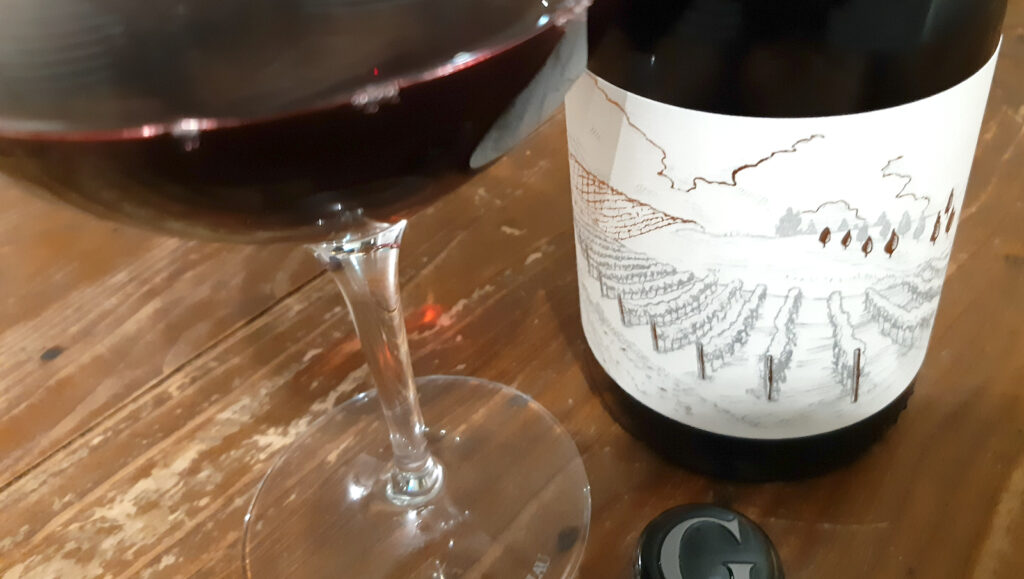
WF: How long has this winery been here?
NM: This part was about 1998. When they built it, it was the largest Straw Bale construction in the Southern Hemisphere. We’ve extended it through here just to give us more room.
DM: We have fruit off both vineyards coming through here – Muddy Water and Greystone. Muddy Water is 40% Chardonnay, 40% Pinot Noir and a little bit of Pinotage and Riesling. The Greystone we’ve got almost 40% planted to Pinot Noir and then about 15 to Chardonnay. So Chardonnay and Pinot are our two main varieties, and perhaps we could have a look at that. Let’s start with some 2020s and then we can look at some younger wines. We have a small amount of our Vineyard Ferment and Erin’s Chardonnay here, and then we’ve got some more barrels out at our Viticulture Shed which works as our Barrel storage over winter.
2020 was also a very beautiful vintage, so this is from what we call ‘Erin’s Block’ our steepest block that’s got the most active limestone of any of our blocks. Mendoza clone, planted to low vigour rootstock which works pretty well as limestone can be quite vigorous. We get a lot of intensity coming through. This is a new barrel though so it’s going to show a bit of oak. That is through malo. We’ll let that rest on whole yeast lees for another 3-4 months before we put it to bottle in late August. It will be part of a five barrel blend. What we like about the limestone is that length and the integration of the acidity. It gets quite expansive on the back palate. It’s early days – this wine will be in bottle for about eight months before we release it. Even then it would be, and should be, quite tight as it has good ageability. So you’re looking for that length and that oyster-shell minerality.
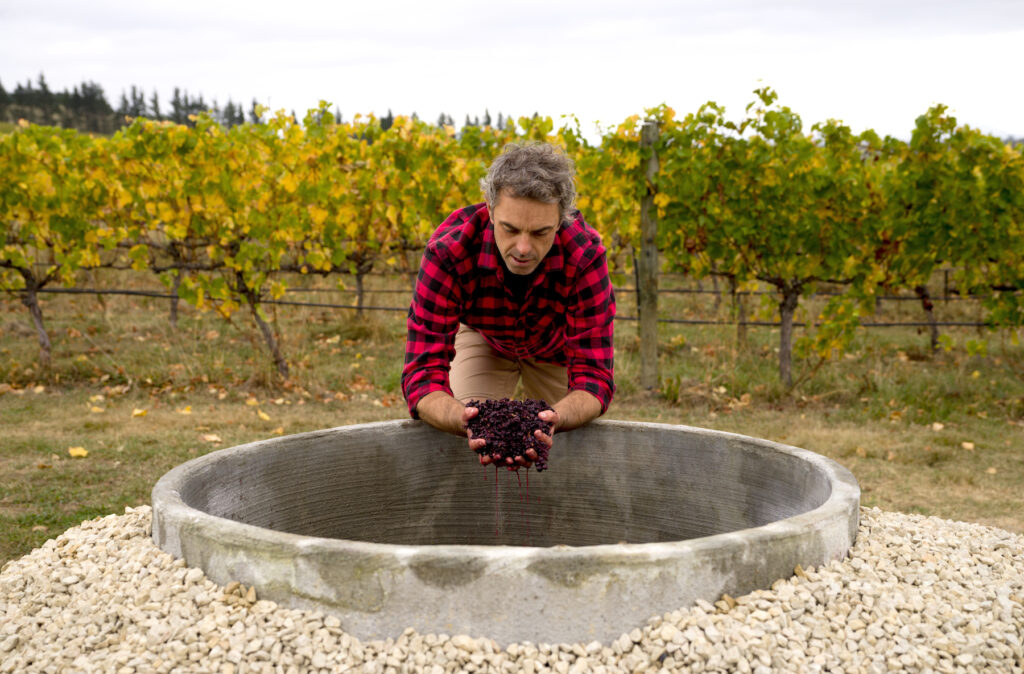
WF: If you sell out of this, there’s no pressure to rush the next one through then? You just say ‘we’re out of that’
DM: Particularly with these one, absolutely. In fact that’s not a bad way to go. We’re only making five barrels, and many years it’s only three, so we’d expect it to sell pretty quickly. That first 75% goes quite quickly and then we like to keep a little bit for the Cellar Door and Restaurant. Other wines, like our Estate Pinot Gris that we don’t want to have gaps because we work hard to get restaurant listings.
We’ve actually got our Vineyard Ferment here as well. We’ve been fermenting some Pinot Noir out in the vineyard since 2012. We wanted to really delve in deeper in our search for vineyard yeast. The belief was that if we left the fruit out where it was grown, we’d get the true vineyard yeast before fermentation.
At the initial stage we didn’t factor in the influence of weather. And that has a massive part to play, and it sounds simple now, looking back. You have cool vintages, therefore you have longer cold soaks, which affects colour, affects aromatics. Warmer vintages you end up with a very short cold soak, or almost none at all. But also different peaks of ferment temperature and post-maceration temperatures as well. It all has an effect on the palate and line, which we’ve come to really love and see that as increasing that seasonal influence in the wine.
WF: I don’t know if consumers understand what a ‘good year, cold year, warm year’ really means. They hear these things – some might walk into a fine wine shop and be told “Oh yes it’s from a very good year” but they don’t understand it, and I don’t think they know about, or even want to have ‘vintage variation’.
DM: I think when you look at Pinot Noir, it’s climbed to heights that no other wine can do. I’m thinking about its homeland in Burgundy. But then in other years it can be frustratingly different, and for some people they see that as being worse, or better! But what we wanted to do was really celebrate that seasonal aspect. And I think by making the sort of wine we are trying to make – with complexity and layers and less of the obvious fruit, then we are attracting the sort of people who are interested in that.
WF: Well not everything is for everyone.
DM: We’ve been really thrilled by the people who have been really into this wine. And interestingly it has upset certain wine critics because it’s outside the mould. It’s outside the box of what a premium New Zealand Pinot Noir would be like, you know? Whilst its not performed poorly in that area, but to compare it to our Thomas Brothers which has got more oak and it a bigger wine. A little bit more glamour. Whereas this is the wine for us that has the intrigue, that we think Pinot Noir should be all about. There’s other varieties that you can drink if you want big fruit.
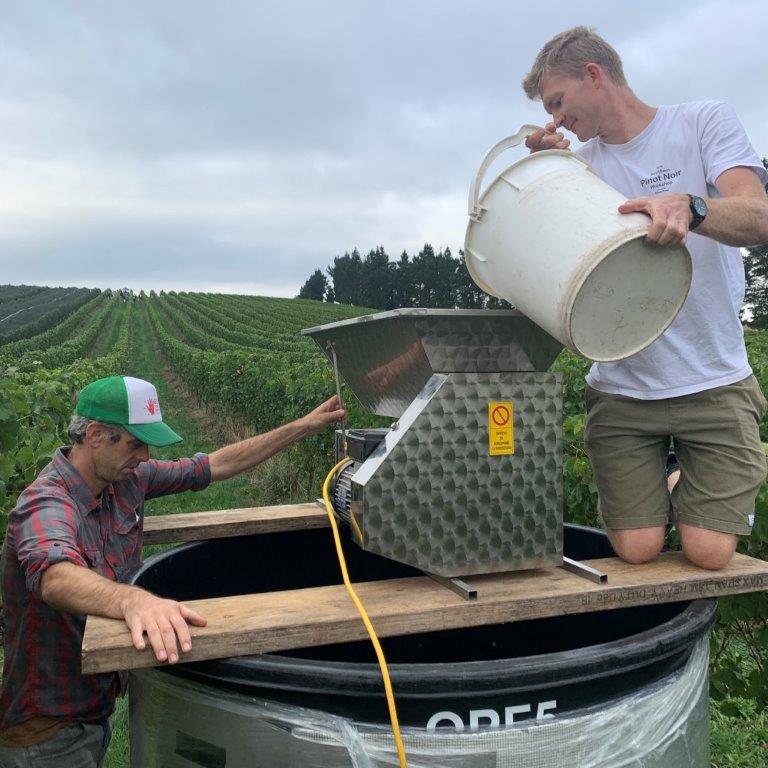
For this Vineyard-Fermented wine, we’ve set up one of our fermenters in the row before we start picking. We’ve got our little single phase destemmer which we put on top and just hook it up to the generator. We do roughly 20% whole bunch to start with.
WF: I put the story up in the News section when it won that innovation award thing, but I can’t say that I fully understood the photos!! So it doesn’t come to the winery at all?
DM: Initially when we say to people that we’re doing a vineyard ferment they’ll view that as just doing a wild ferment. And they’ll be like ‘yep, that’s cool’. Then when you get in a bit deeper they’re “wait, what..? it stays out there?” We don’t bring it in until the day of pressing which is typically for us about a month after harvest. It’s had its four weeks on skins, gone through ferment, post ferment maceration. We’ve tasted it and we think it’s ready to go to barrel. So we go out there with buckets and bins and bring it back to the winery, press it the same day, and then the next day we go into barrels. No new oak, just three year old wood.
The good part of the ferment for complexity is that initial stage of so many yeast species performing their thing. After a couple of days of that happening you start to get a bit of alcohol and then saccharomyces start to take over. But if you’ve got a lot of strains of saccharomyces you get a lovely mix of the different species.
NM: Especially when you realise that the saccharomyces isn’t present in the grapes at all. There’s a sort of myth that they’re the film on the outside of the grapes. They’re not at all.
The most common place to find them is on bark, on trees and grapevines. It just happens to be floating round and if the conditions are right – like with alcohol that kills all the other yeasts. Then it’s ‘sweet, I’m in my happy place now’ and goes crazy. So trying to get that indigenous saccharomyces when that alcohol fermentation is taking place…
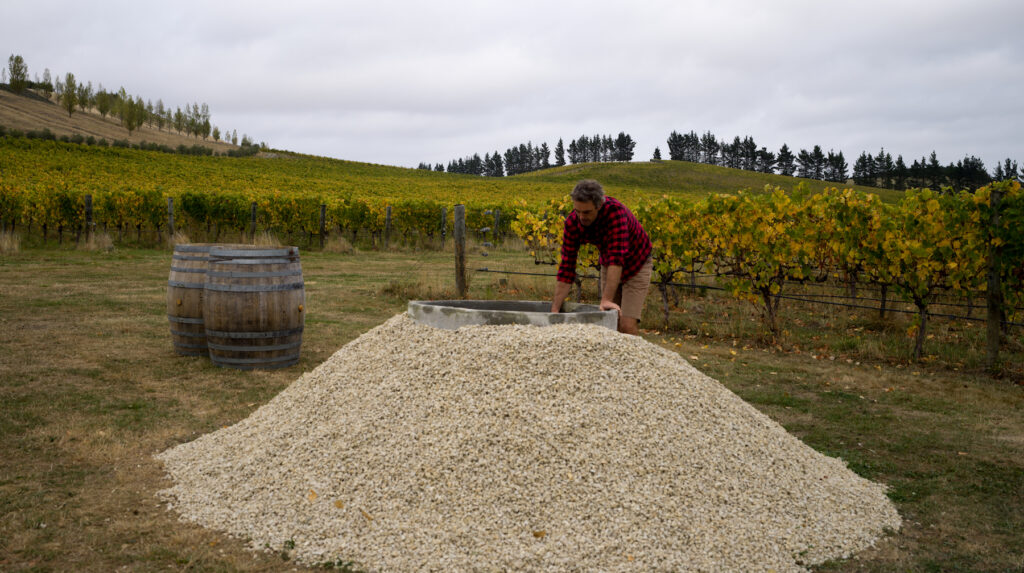
DM: The yeast will live in those places where there’s permanent residence for them, so bark or soil, whereas the leaves or fruit are only there for a short period of time. There’s a very low population on that part of the vine. So when you pick and you bring it in, you’re going to bring a very limited amount in. So you’ll still get wild ferment happening in here, but how accurate it is, of that site, is something we’re not sure about, which led us to exploring that.
This will stay on the fine lees in barrel until August. We have roughly ten barrels which we’ll then blend together for our 2020, and we’ve got a bottling line on-site so we bottle everything ourselves. Unfined and unfiltered so we hold on to that true sense of place.
WF: That was quite a complex wine to get my head around. I love the tannins in it – quite fine and subtle. Not a ‘big’ wine, but it’s got a lot going on – quite jazzy and yet ethereal.
DM: This is our Vineyard Ferment 2021 – pressed two weeks ago. It’s in a four year old barrel which is part of our research that we’re doing with Kelleher Innovation linked with the University. The last three vintages we’re sampling comparative ferments – winery versus vineyard from the same fruit. Dealt with exactly the same way, pressed at the same time, aged in the same barrels. A pHD student has got about another fifteen months of analysing that before she writes her thesis. There’s going to be some pretty interesting stuff to come out.
We believe that through using some of the practices that we are with the Vineyard Ferment, we can use them in the winery to make our estate Pinot Noir a more beautiful wine as well. We’ve certainly pulled back on plunging, seeking warm temperatures and that sort of thing. I think back even five or six years ago and there would be three plunges a day and some of them would be quite vigorous. There would be sulphur going in at the crush.
That myth that you need to plunge for structure, it’s not right. Especially when you have a good vineyard set up giving you good fruit. You get that natural structure coming through from the fruit. You look at vine age and so many vineyards are turning a corner at the moment. And that coincides probably with the people who are working with them, you know?
WF: Does it take a while to understand a vineyard?
DM: Absolutely and overlay that with the fact that the vineyards are changing pretty rapidly when they’re young. What you did a few years ago might be the wrong thing to do now. Because this patch of vines have matured and now you’re perhaps getting thicker skins, smaller grapes. There’s a certain level you can get to pretty quickly, but as far as ‘showing the place’ then you need to understand the place. That goes back to what Pinot and Chardonnay is all about. Working with a light touch and getting everything right in the vineyard, so that we don’t do a lot in the winery. That is perhaps something that has been missing in the early years in New Zealand, but that is definitely changing. Part of that is a confidence thing as well. There’s no such thing as a perfect wine – all you can do is show the place, and that’s the best way.
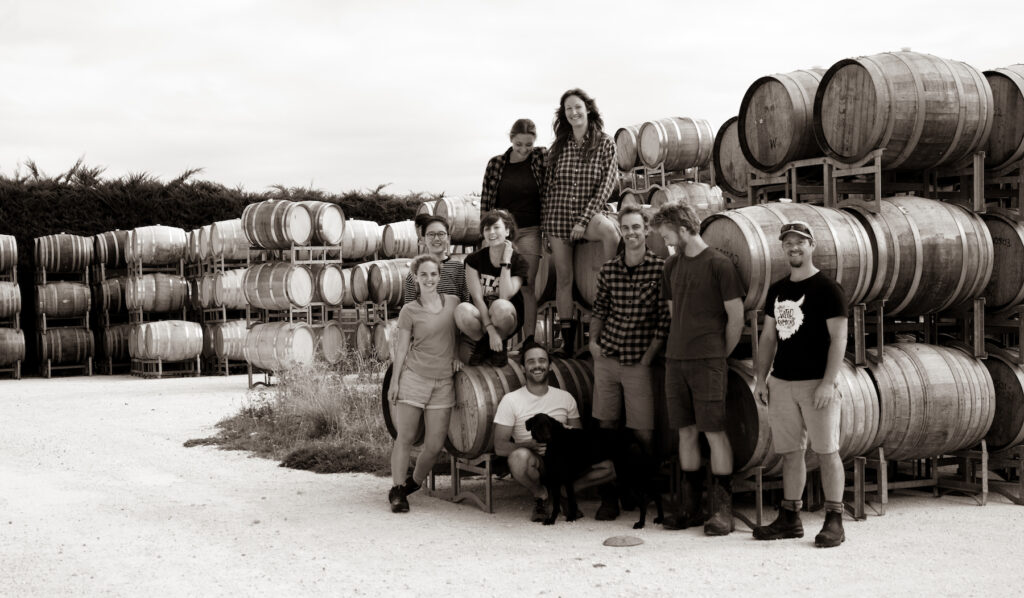
NM: It’s a pretty cool spot and I definitely think the wines are getting more and more interesting. Trying to tell the story of place is not necessarily the same as trying to fit into the WSET box. It used to crack me up when I was at Pyramid Valley – people would come up and give their 100 point scores to one of the two Pinots there. And they’re made identically – if you like one better than the other then all you’re saying is that hill is not as good as that hill!
WF: I’m still finding scoring a tricky thing to navigate. It wasn’t my intention to go down that path, but I think it’s all ‘learning’ so I’m doing my best!
NM: Customers want it.
WF: Exactly, and that’s the main reason I need to have a go. People said to me – anyone reading your thoughts on a wine will expect to see a number at the end.
NM: Medals on the bottles – we use them.
Nik and I return to the Cellar door and quickly trot through a few ‘finished’ wines – including start off on the 2019 Vineyard Ferment Pinot that we’d talked about…
WF: This is a ‘cult wine’ I would imagine!?
NM: Well that depends. If you’re in Sweden, yes! People over there were waiting for the moment at midnight when it was released on the Systembolaget to buy it all. New Zealanders still haven’t quite wrapped their head around it. Internationally, all our distributors are like “this is amazing” but for some reason New Zealand hasn’t quite got into it. Dom alluded to having to tell the story, and even with the articles and stuff, I don’t think people quite understood what was happening. The reason we’ve got the funding to have a pHD student out there, monitoring, is because we don’t know why it’s doing this.
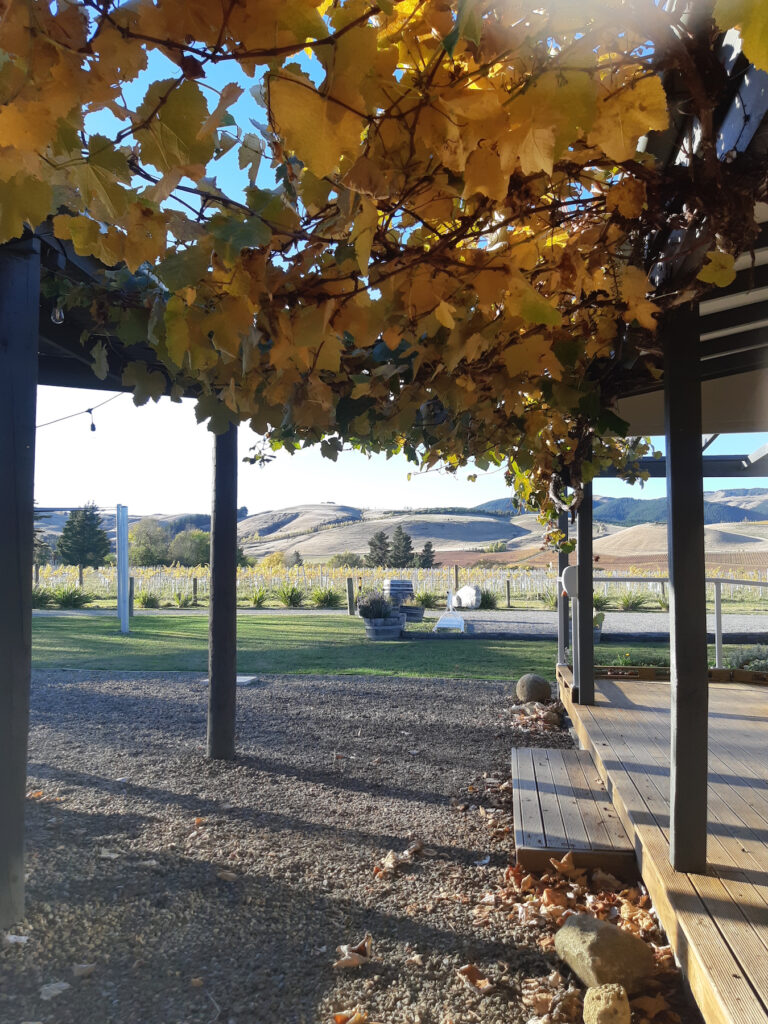
We’ve done it since 2012 and we’d always known it was half a percent lower alcohol. We were just blending it away as one of our weird and wonderful experiments. Then at Pinot ’17, Michael Brajkovich, Dom, Jancis Robinson were speaking about wild ferments and things like this specifically. Michael Brajkovich has worked with Mat Goddard which showed the variation of yeast species within about five hundred metres. It varies on the plants, wildlife, bees and everything else that transport those yeasts.
But also you have years that are really cold, so it takes longer for everything to kick off, because it’s sitting outside in a cold autumn! So we are extending that vintage influence into the wine. Before, if you pick it, it goes into the winery, into an ambient set temperature, and vintage is done.
Here vintage influence is carried through in temperature as well. It’s about removing all the other parts of that. At the Pinot conference everyone was like ’you guys should sell that’.
WF: I think it’s an intriguing way to delve into that sense of site. It’s quite brilliant actually!
NM: It tends to be winemakers having a bit of a fiddle and it disappears when the Marketing guys go “aaah I’m not selling that”. I’m trying to tell people that this is actually us having a real go at this. We’ve got a totally separate de-stemmer that lives out there. We’ve got different different vineyards and block, but we’re trying to get a sense of the site. That row is picked and put into the fermenter right there.
WF: I can see people really getting into this and seeing how the wines are different each year, and how they develop over time – almost having a relationship with this wine, and wanting to visit the place and so on. So not in an awkward wine-collector kind of way, but quite personal?
NM: This is the Estate Pinot 2018 and not sure why but it is the lightest colour we’ve ever had for our Estate. All of the 2018 Vineyard ferment was a light colour as well – and our neighbours.
WF: All the flavour is there though.
NM: It’s a wee bit tricky for people to wrap their head around that. It’s quite full-bodied, it’s still got tannins and structure and everything else in there but the colour.
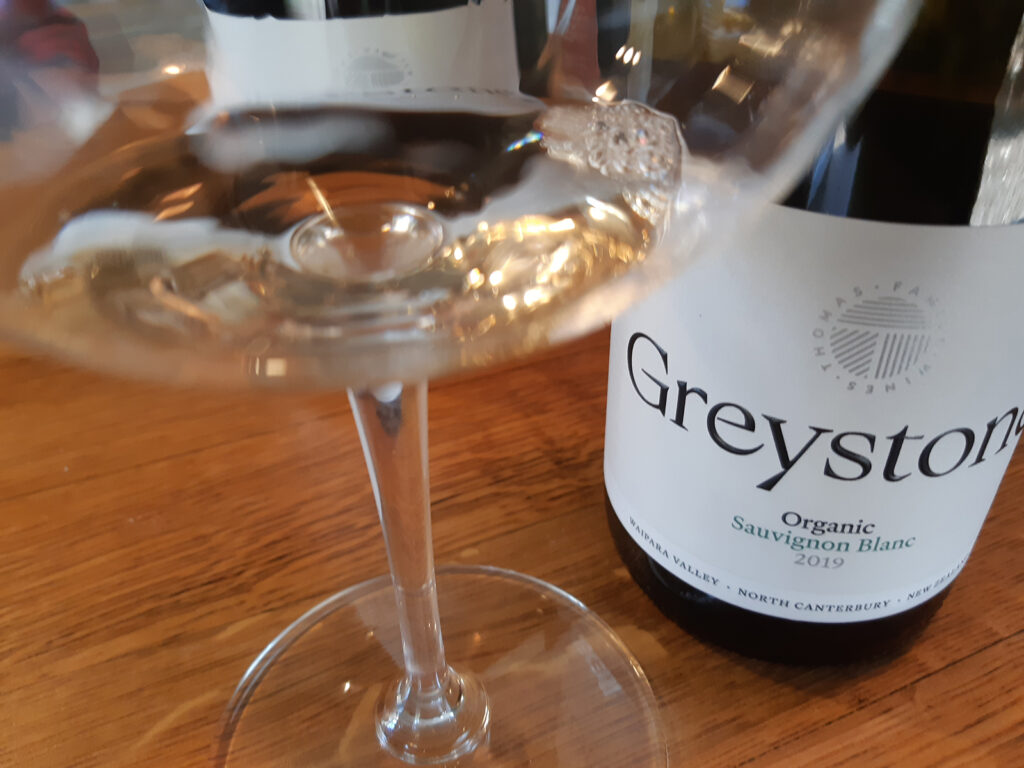
Now, this is our Sauvignon. 100% barrel fermented and malolactic in there as well, so you get that creaminess that really softens the acidity. Everything that is done in the vineyard and then to Dom’s winemaking is about getting pristine fruit. When we’re growing really expensive organic fruit, we want it taste like fruit. So a long 48-hour settle on this, to get all the solids out so you don’t get that reduction that you might find in some. Sauvignon’s really prone to reduction if you handle it in that way. There is lees-stirring in here as well.
WF: I can see what you meant about the Loire clones – this is much more golden in flavour than the usual green we’d expect from a Sauvignon. Roasted pineapple, melon, golden kiwifruit. That’s utterly delicious, that.
NM: And the fruit is yellow versus green when it’s picked. You do get that colour palette of golden flavours in it. Waitrose in the UK love it, as their premium Sauvignon. New Zealanders – I can’t get to buy it. Everyone in New Zealand who tries it says “I don’t like Sav, but I like that” and we were really reliant on sommeliers, so when COVID hit, that one almost stopped.
Finally – this is our Chardonnay. Same deal as before, all barrel fermented. I always seem to get that same Roses Lime Juice character. This does full, natural, 100% malolactic.
WF: The fruit purity through all those wines is a real thing. Dry, clean, simplicity in a great way. Like when minimalism is done really well and it’s not so much an absence of something, as a pure sense of space – or in this case – of ‘place’.

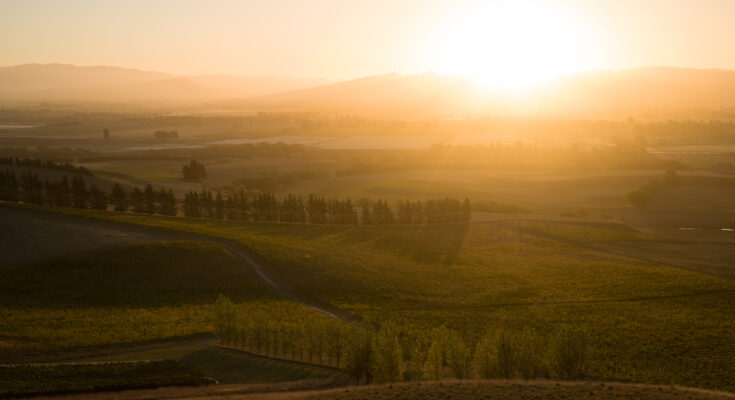
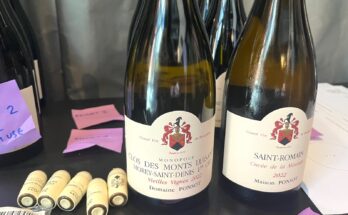
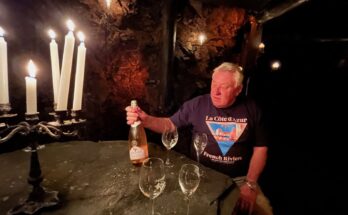
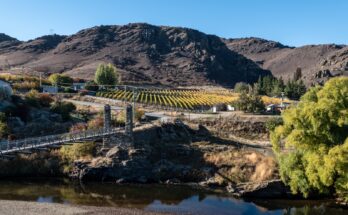
Excellent article.